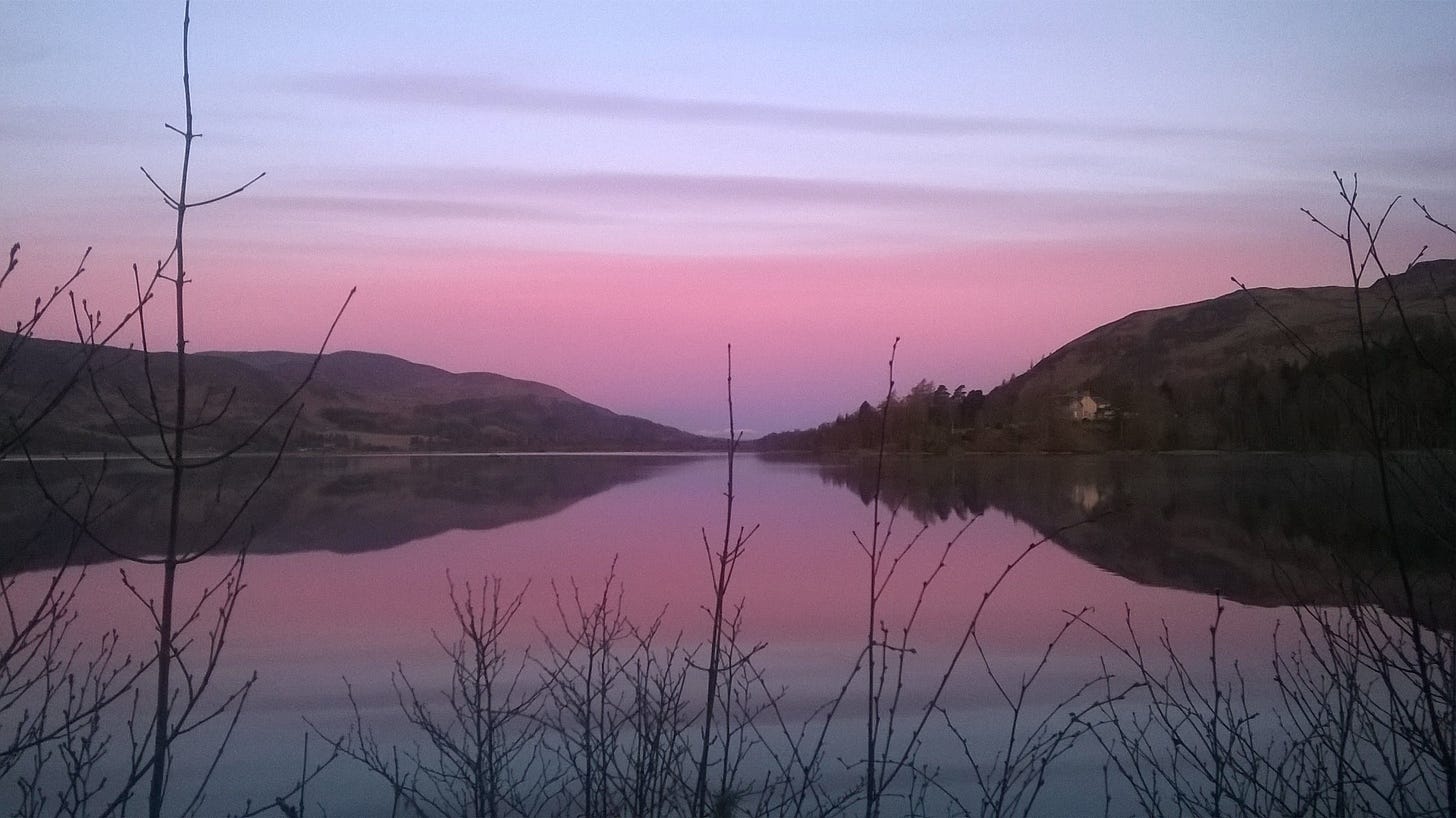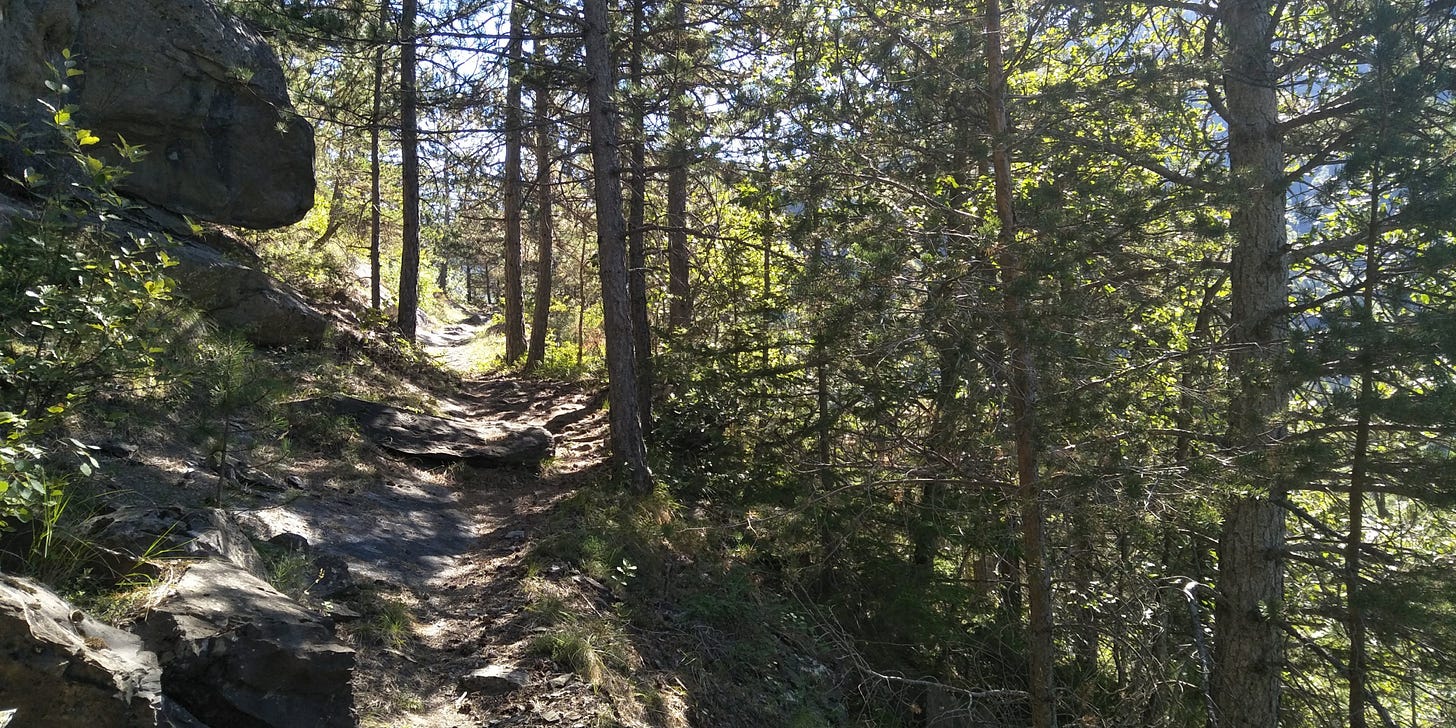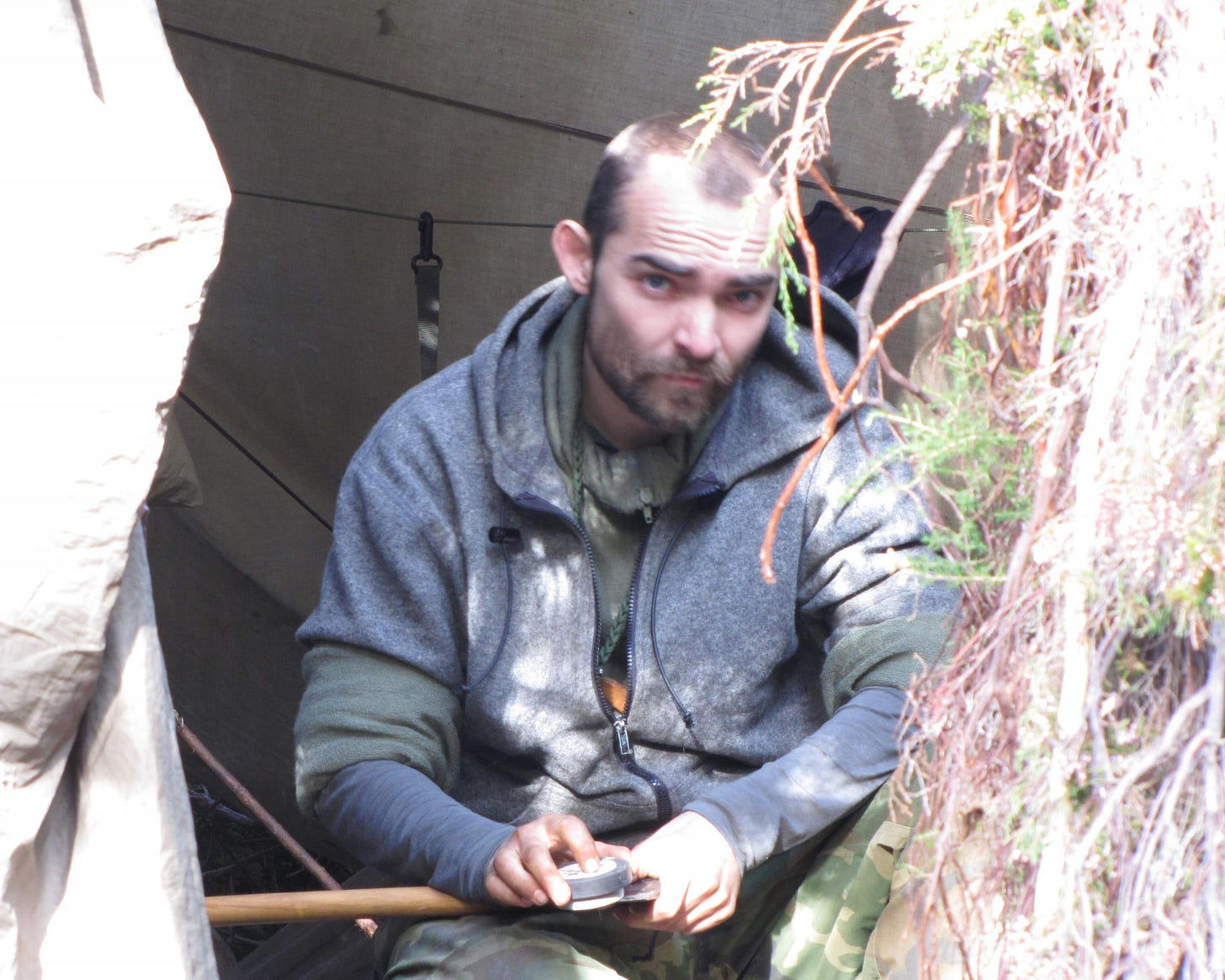Here, in the global north, it is the vernal (spring) equinox and this seems like a wonderful day in the year to launch the second season of Ancestral, Wild Empowerment, a day when no matter where on the planet you are1 the sun will rise due east and set due west. Although we don’t precisely get the same amount of daylight, the equinox brings us the closest to this solar solidarity. As such, I think this day is perfect for this post.
There is an inherent difficulty in knowing where to start any project—and beginning to look at life as a forager, as a hunter, as a fisher, and as one who is a part of the wild, rather than apart from the wild, is no exception. The subject matter is inherently, stupendously, gloriously, vast.
In our first season of Ancestral, Wild Empowerment (AWE), we looked at the basic idea of what it means to be a modern student of this subject, of how being a part of the wild requires exactly the sorts of skills naturalists today use, and of how we could begin to piece this together, letting nature guide us, show us the path.
The main theme of that season was a consideration of respect—for the nature, for our ancestors, and for ourselves. We also introduced the concept of how this subject can empower us, no matter who we are, no matter where we live, rural or urban, our social background, our gender, colour of skin, or any other variable. If you have an internet connection, and you have the will, you can learn these things. Of course, there are easier places to learn, there are easier situations to learn in but, essentially, it is a subject open to all and, crucially, it is the BIRTHRIGHT of us all.
We come from the wild, and it time for us to remember that.
The wild is home, it is not the ‘other’, it is not out to destroy us, it is not to be feared, but loved, respected, and moved through carefully and consciously. We belong there, not destroying it, but caretaking, leaving it in a better shape than we found it.
We can learn much from the nature. It provides so much, after all.
For the second season of AWE, I have chosen the overarching theme of mapping.
Mapping is a concept and device which allows us to address the whole picture as we begin to more forward in our ancestral skills studies. It allows us to focus on individual strands of the process of becoming a modern student of this timeless knowledge, whilst also demonstrating the sheer vast nature of the subject, allowing each part and portion to be seen as one piece in an incredible puzzle.
Which brings us back to the question above—where do we start within this vast whole?
Other writers on similar subjects have made it clear, time and time again, that our first line of defence against a swift death in the woods, or mountains, or coast, or meadow, upland, marsh, jungle—wherever—is our clothing and what we carry on our bodies.
Clothing, as Mors Kochanski2 said, is the shelter of the individual.
For the purpose of what is to come, let’s assume we are not going naked into the woods. I have no problems with nudity, with naturists (although the word has sometimes confused people, when I’ve mentioned I’m a naturalist. For some reason, the two seem a bit close.), but I think it is a relatively solid argument to say we’re unlikely to be naked outdoors in what some would deem a ‘survival’ situation.
Mentioning the word ‘survival’ allows me to reiterate that these skills—viewed by some as macho, as man vs wild, Rambo-esque, military rather than peaceful, a combative way to survive in places incorrectly perceived inhospitable—are, in my opinion, far too ancient, timeless and universal to allow such views. It is not survival, it is life—and to strip back life to surviving misses the whole point.
Some teachers call it wilderness living, a term I like, but then the question of whether true wilderness still exists raises its ugly head. As such, for the purposes of my own work, I prefer ‘Ancestral Skills’. It covers and allows all manner of avenues for us to explore, after all: past and present and future. I would argue that these skills, this knowledge, are as relevant now as it was ten thousand years ago—something I will discuss in more depth this season.
It is entirely possible to spend a night, or more, out in nature without any shelter but the clothes you are wearing. Yet, even then, you will need a place to either lay or sit down, somewhere to pause and light a fire, for example, or just to curl up and sleep.
As such, shelter will be the first thing we look at through the lens of ‘mapping’. Where to find it, how to determine if a location is good, perils and pitfalls, methods of rapidly improving your surroundings and even ideas of longer term, more permanent shelter.
This point is important—the device I am using for this season and later ones too, is of someone moving into an area and looking to be a part of the nature there. To live in the woods, not merely visit or await rescue, but to bed down, knowing this will be home for weeks or months, perhaps longer (although there will also be discussion of the nomadic element of our ancestors and certain groups today, the seasonal shifts in location, in order to carefully manage the game available and not denude an area too comprehensively).
I will look at my own surrounding area to do this, look at places I would consider options for shelter, both using what is available now, manmade and otherwise, but also imagining the area devoid of other humans. There are many options.
After shelter, what comes next?
This is a tricky one. Consider drinking water—you have to find it first, water which isn’t tainted and can be drunk, and even then you are probably safer boiling it, especially in this era of chemicals and pollution. So, before you can even have that drink you also have to make or improvise a container to carry it and boil it within. Which means knowing what plants or materials to use to do this. Boiling means you need to use fire, so you also need to know which wood to burn, how to get that fire started, and how to keep it going. You will probably need other tools too—tongs and rocks to heat in the fire and add to your container to boil the water. What wood would work best for those tongs? Can you just use any rocks (no, please don’t!)? How to tap ash off the rocks so as to not make your water too acrid?
And all this before you take a first safe mouthful of water.
However, water seems a good place to move next, after shelter, and fire a sensible third.
Shelter, water, fire. Three of the most important words in ancestral skills, three of the biggest topics too, each of which could—and do—fill whole books. As such, in this season, I will stick to the core message behind this series—teaching you the principals and showing you how to take the further steps on your own journey. Your own environment is likely to be different to mine—I simply cannot look at all the variables needed to encompass this ridiculously wonderful planet of ours. Finding water in the Arctic is very different to finding water in the jungle, both are unlike finding water in Scotland, or here in the French Alps.
I will show you what I would do to find water here (it’s not very hard, to be honest, mountains are very useful for funnelling water into one place), but also discuss some other methods to find it which I would not need in this location.
Similarly with fire. The species of trees you have—or don’t have, in parts of the world—will vary, yet some principals remain the same. Where I grew up in Orkney, there were very, very few trees, so I learnt to be creative with firemaking. It was a good lesson to learn at that age. However, the abundance of trees doesn’t necessarily equal an easier fire—for me, it took a lot of reading, of studying, and of trial and error, before I felt comfortable making a fire with that abundance. I would experience too much smoke, too wet wood, wood which never really got going, but smouldered, or species which popped and spat hot sparks everywhere. I had to learn how to find and process trees, branches, and twigs—and I am learning still.
This is the beauty of this subject—there is so, so much to learn, as there was for our ancestors, although they had much better teachers in the form of parents, sisters, brothers, grandparents and, well, everyone they knew.
Shelter, water, fire. After these three, where to go next becomes harder to decide. Food procurement sounds simple enough, but we are not bears, who can snuffle along merrily munching berries, or digging up tubers with our claws, crunching carrion or vacuuming up insects. We are the tool users.
Food comes in different guises and flavours—we are remarkably adaptable, capable of eating a vast range of other species, a range made ever wider by our use of fire. In the past, those ancestors would have been opportunistic to a degree, unlikely to ignore a food source, even if they were looking for another.
In season one of AWE, I spoke of how it gives an inaccurate impression of those ancestors, to call them hunter-gatherers, or even hunter-fisher-gatherers, as this implies an order of calorific importance. Some cultures would have relied on considerable quantities of fish, for example, others would have gathered plants—whether greens, tubers, seeds, nuts, berries or fruit—in prodigious varieties and quantities. Hunting, so often the (male-dominated) modern human’s impression of how we found our calories, was certainly a part of the diet, but only one part of it and, often, not the main source of fuel.
To gather fish, whether freshwater or saltwater species, to collect shellfish, or crustaceans, requires special knowledge and equipment. To hunt, or trap, likewise. Even to gather plants needs a receptacle to hold them, perhaps a digging stick or blade to collect and search. Each option needs tools.
Which is why, following shelter, water and fire, I shall first talk of tools, then the things we can make using these, before discussing food, further subdivided into three broad categories and posts—plants, fish, and animals, including birds, insects and pretty much anything else we can eat.
Medicine comes next. For many years, this was a subject I barely scratched the surface of, now, however, I find it endlessly fascinating. It is remarkable to me, just how many remedies and healing properties our plantlife possess. Utterly remarkable.
Following medicine, I shall talk of that other essential—art. Often, this can be overlooked in the outdoor skills guidebooks (and certainly those marketed as ‘survival’), yet in reality art is what held us together, art is what pushed (pushes) us forward and I believe it needs a post of its own.
Related to both art and medicine (and, potentially, everything I’ve mentioned), I shall also risk a post on the unseen, on the, dare I say it, spiritual aspects of hunting, fishing, and gathering, of being in the woods, out in the nature, and what the above knowledge does to you, of how so many religions and belief systems included time alone in nature, whether fasting, or simply living by oneself for a spell—the spirit quest being just one facet of this.
Mixed in with these essays, I hope to bring you the work of others, those who wish to share their own exercise in mapping, as I mentioned here. If you want to take part in this too, you are more than welcome—I would love to hear from as many different people, all across this fascinating planet of ours.
The first of these posts, by
, was shared earlier today. It is perfect and I can’t wait to read the next instalment. Here’s a link in case you missed it, and I do urge you to have a look!I also intend to bring you a few extras, including a more in-depth examination of why I think this idea—of learning the timeless ways of those ancestors, and how they can empower—is so essential in today’s world, with a personal twist.
Throughout, I will refer to the overarching topic of mapping, using this as a framing device and also showing how important such an activity was (and is), how we can gain an incredible depth of knowledge by walking the land day after day, by understanding the effects of time, of the many micro seasons, and of our own personal history, both within a place and in others.
Each essay will by necessity be a relatively brief introduction to these topics, but an introduction which I hope gives the reader a stable base to pursue their own studies, should they wish to. I will offer ideas for practical projects and I will ask you questions, and hope you ask your own—of me, if you wish, but also of yourself.
Some of the posts will be free to all to read, like this in Season One, but the majority will be paywalled, if with a healthy chunk available for everyone to read. At present, until the 1st of April 2024, there is 20% off the price of both monthly and annual subscriptions.
Season Two of Ancestral, Wild Empowerment will cover several months but, unlike Edges and Entries, or my doses of fiction, I do not want to force myself to follow a precise schedule for these posts. They certainly won’t be weekly like the other two (no Edges and Entries today, though—I thought two emails in one day was probably already enough!).
Which of the above are you most excited to read about? Do you have any topics which already touch on your own interests, or expertise? Would you like to share a walk of your own?
Many thanks for reading, I hope you are as excited about this project as I am.
Okay, apart from if you are standing at the north or south pole, but I think that rules most of us out?
Mors Kochanski was a Canadian outdoors instructor who popularised the term ‘bushcraft’ in the northern hemisphere. He was incredibly knowledgeable, generous, and an outstanding naturalist. The quote is from: Grand Syllabus, Instructor Trainee Program: Survival, Wilderness Living Skills, Bushcraft. 2015. (Karamat Wilderness Ways, ISBN 978-1894453677)










Absolutely fascinating and engrossing. I am so interested in this series and I cant wait to read more. I love your work Alexander, and this is also right up my street. I've had a lifelong obsession/interest/fascination with prehistory and the possibilities of social structures that are integrated into, not only wider natural rhythms and systems, but also the whole conceptual arena of how this integration influences psychological, philosophical and spiritual development and the social behaviour of humans. Your insights are fascinating and I really appreciate you writing and sharing your knowledge and experience here. Thanks.
Your distinction between being “a part” of the wild vs “apart” from it is spot on. This article has got me thinking about the relationship between outdoor recreation and the wild. I’ve spent months in the backcountry… with the assistance of an ultralight tent, stove, water filter, etc… and while these experiences are “in the wild” and subject to the forces of nature, they’re still a far cry from living in/with it.
The section on fire and hunting both stood out to me. In the Rocky Mountain West (where until recently I spent most of my life) camp fires are frequently banned because of drought and wildfire danger. Even without a ban, I prefer not to build a fire unless it’s at a designated campsite. Fishing/hunting is (for good reason) regulated because of overuse. All of which is to say, it’s challenging to (re)find our role and place in the wild.